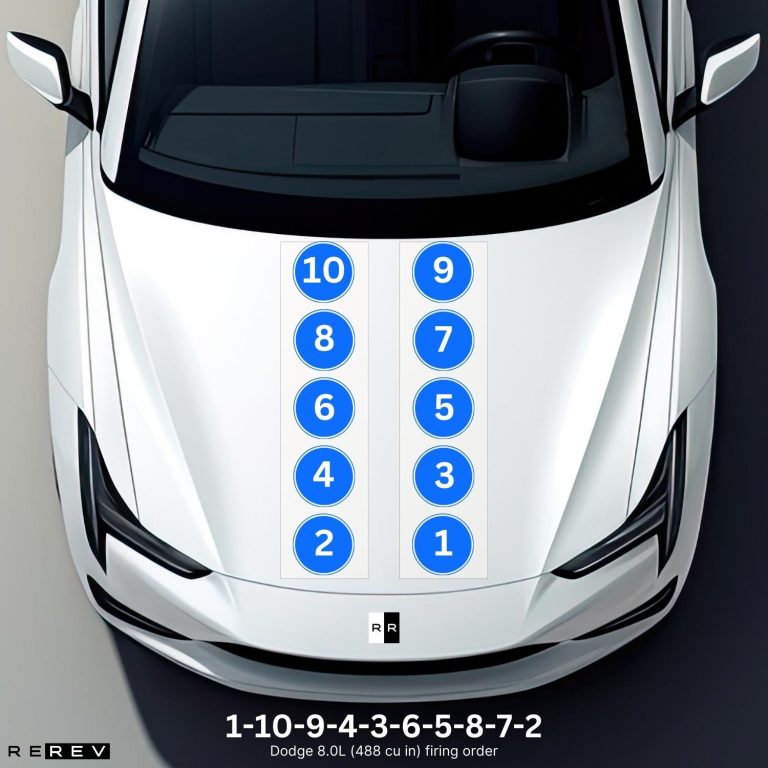Dodge 8.0L (488 cu in) firing order — diagram & guide
Dive deep into the engineering marvel of the Dodge 8.0L firing order.

Making superb big-block V8s has been in Dodge’s bloodline for years, but the brand truly stepped up its game with the 8.0-liter V10. This engine was specifically produced to power the first-gen Dodge Viper, and little did they know back then that it was the birth of a legend.
Some years later, the 8.0-liter engine from the first-gen still keeps running strong, but it does have a few reliability issues. Well, it’s nothing you can’t handle if you know the Dodge 8.0L (488 cu in) firing order, but this guide will fill you in on it if you don’t.
Dodge 8.0L V10 firing order
Back in 1992 when this engine was introduced in a Viper, it seemed pretty revolutionary. However, it was based on a smaller Magnum V8 engine, so drivers were pretty confused by its exact firing pattern.
Things have gotten much clearer with the Dodge 8.0L V10 firing order 1-10-9-4-3-6-5-8-7-2, and the same firing order was used in all first-gen Vipers. However, the engine was produced all the way to 2003 and even found its way into several trucks.
So, it’s natural that you may experience a few misfires every now and then if you still drive a car with this good-old V10 under the hood. If that’s the case, you are going to need a bit more than the firing order itself since you have to first identify the cylinders to apply it when dealing with misfiring issues.
Dodge 8.0L cylinder diagram

Since this engine is a V10, the cylinder layout is a bit different than the usual for Dodge V8 engines. This time you’ll have five cylinders in each cylinder bank, and front-to-back cylinders 1, 3, 5, 7, and 9 are on the driver’s side.
The first cylinder is the one at the front end of the engine, while the passenger’s side bank includes cylinders 2, 4, 6, 8, and 10.
Dodge 8.0L vehicle applications
As for the vehicle applications of this engine, things were pretty simple and there are only a few cars with the 8.0-liter V10 under the hood:
- First-gen Dodge Viper
- Dodge RAM 2500
- Dodge RAM 3500
The engine was exclusively used for the Viper and RAM models, so there are no other vehicles with this engine, and that makes it easier for drivers since it’s almost impossible to mix up the firing order.
Our take
Ultimately, the 8.0-liter V10 is a pretty specific engine used only in two vehicle models, so as long as you know the right firing sequence, you can work on the engine to fix minor issues.
We recommend that you go from the first cylinder at the front of the engine toward the final cylinder in the exact firing order when diagnosing misfires.